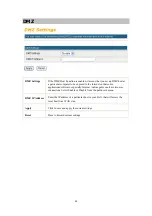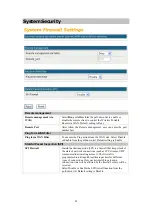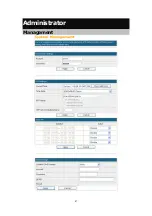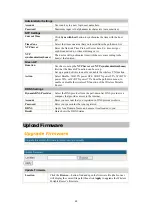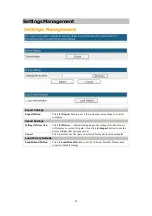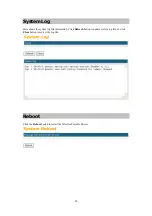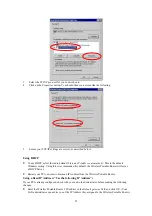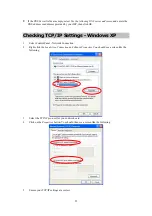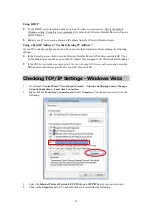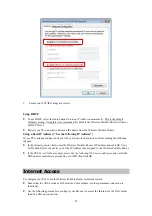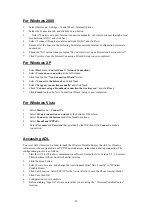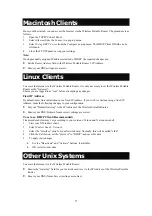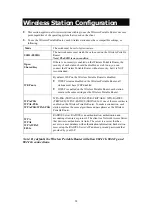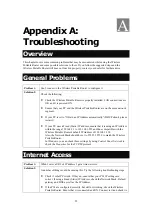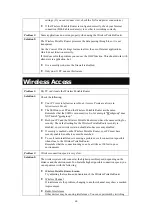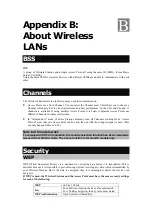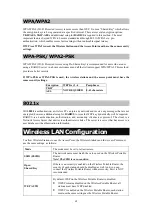
58
Wireless Station Configuration
•
This section applies to all wireless stations wishing to use the Wireless Portable Router 's access
point, regardless of the operating system that is used on the client.
•
To use the Wireless Portable Router, each wireless station must have compatible settings, as
following:
Mode
The mode must be set to
Infrastructure
.
SSID (ESSID)
The network name must match the value used on the Wireless Portable
Router.
Note! The SSID is case- sensitive.
Open
Shared Key
If there is no security is enabled on the Wireless Portable Router, the
security of each station should be disabled as well. And, you can
connect the Wireless Portable Router without security, but it is NOT
recommended.
WEP auto
By default, WEP on the Wireless Portable Router is disabled.
•
If WEP remains disabled on the Wireless Portable Router, all
stations must have WEP disabled.
•
If WEP is enabled on the Wireless Portable Router, each station
must use the same settings as the Wireless Portable Router.
WPA-PSK
WPA2-PSK
WPA-PSK/WPA2-PSK
WPA-PSK (TKIP/AES)/ WPA2-PSK (TKIP/AES)/ WPA-RADIUS
(TKIP/AES)/ WPA2 -RADIUS (TKIP/AES): If one of these securities is
enabled on the Wireless Portable Router. To make a connection, each
station must use the same algorithms and pass phrase as the Wireless
Portable Router.
WPA
WPA2
WPA WPA2
802.1x
RADIUS Server: RADIUS is an authentication, authorization and
accounting client-server protocol. The client is a Network Access Server
that desires to authenticate its links. The server is a server that has
access to a user database with authentication information. Each station
must set up the RADIUS Server’s IP address, port and passwords that
provided by your ISP.
Note: By default, the Wireless Portable Router will allow 802.11b, 802.11g and
802.11n connections.

